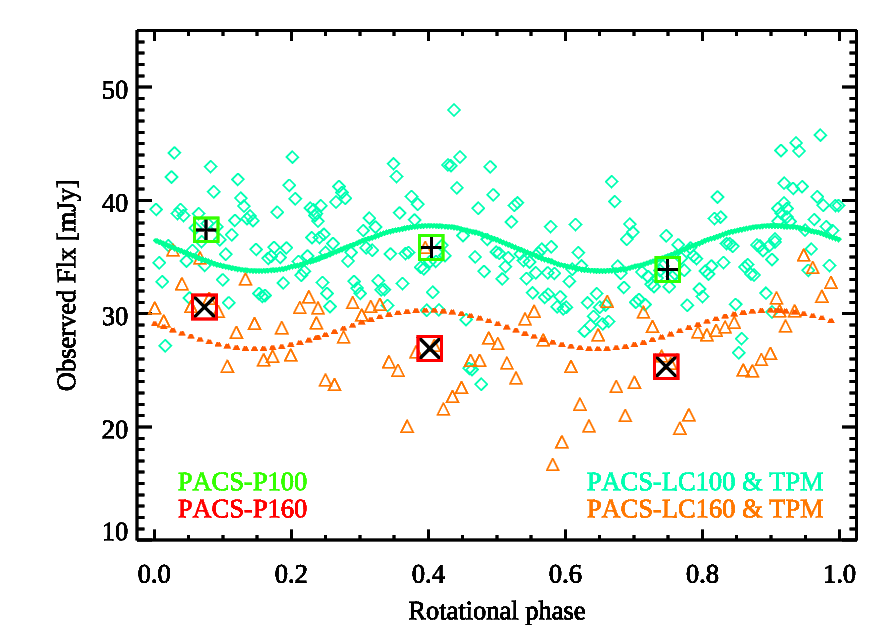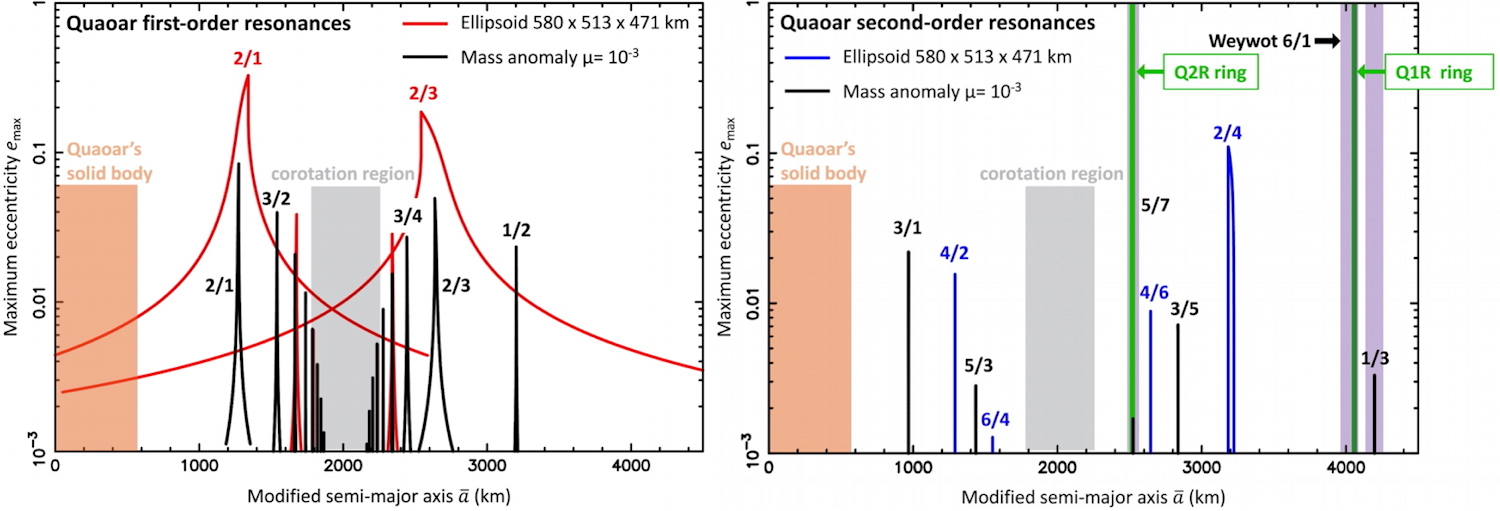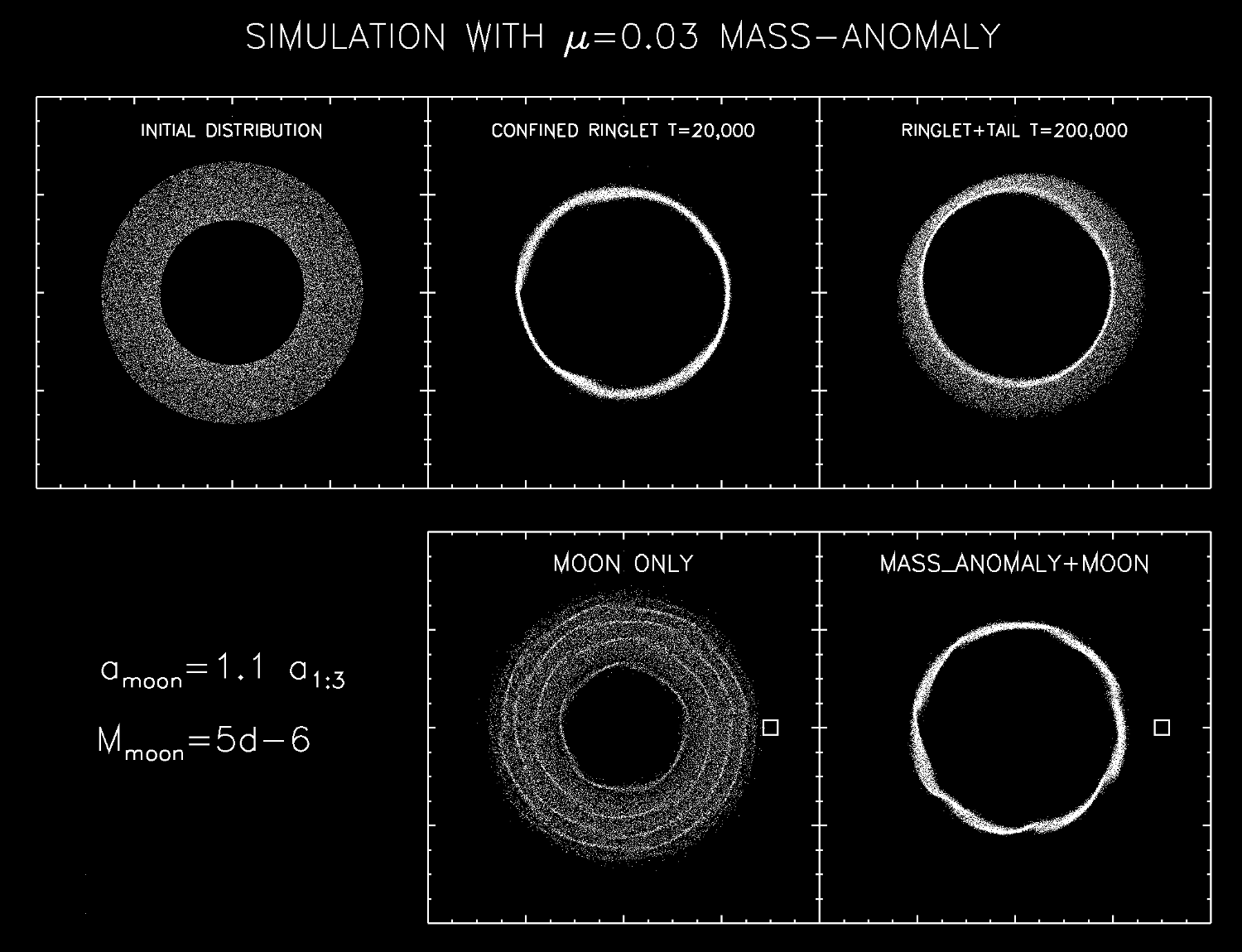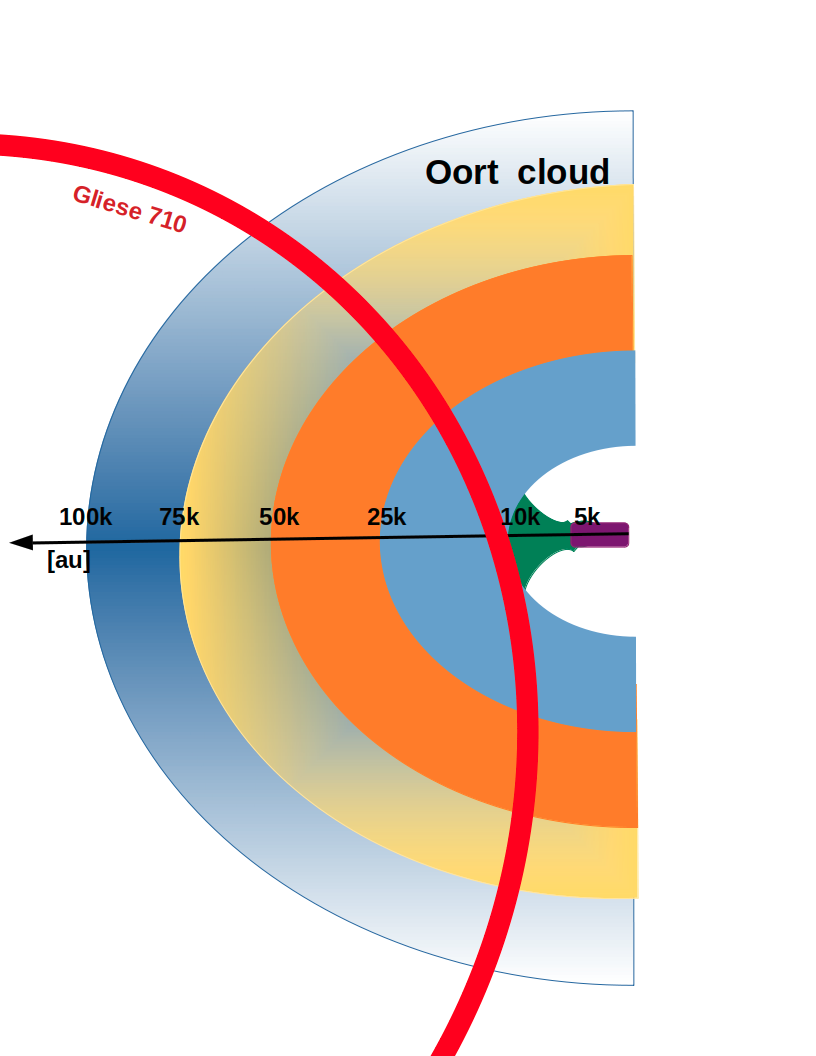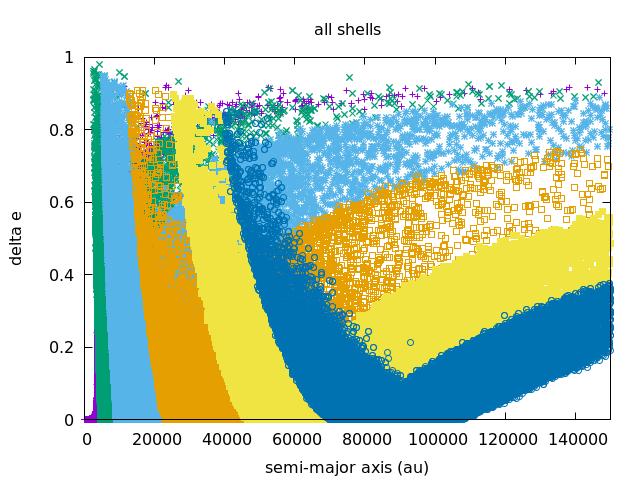Introduction
Bienor is an inactive centaur with an orbital period of 67.34 years and a rotation period of approximately 9.14 hours [1]. Upon studying the color-albedo distribution of over 100 transneptunian objects and centaurs, two distinct clusters emerged: one composed of dark-neutral objects, and another of bright-red objects [2]. This distinction is particularly evident among centaurs [3,4,5], with median albedos of approximately ~5% for the dark-neutral group, and ~8.4% for the bright red group [6]. Bienor falls within the dark-neutral group.
Regarding shape and orientation, extreme light curve amplitudes suggest that Bienor is a highly elongated body [7]. According to [8], there are two possible rotational pole orientations: β = 50° ± 3°, λ = 35° ± 8° (prograde rotation), or β = −50° ± 3°, λ = 215° ± 8° (retrograde rotation). Assuming Bienor is a triaxial ellipsoid under hydrostatic equilibrium, [8] also constrained the b/a axial ratio to 0.45 ± 0.05.
Some controversy surrounds this object due to the inconsistency in size and albedo measurements obtained through various techniques [9]. Thermal measurements using data from WISE provided a diameter of (187.5 ± 15.5) km and a geometric albedo of (5.0 ± 1.9) % [3]. Radiometric measurements from the HST and SST resulted in a diameter of (198 ± 7) km and a geometric albedo of (4.3 ± 1.6) % [10]. Subsequently, observations from SST, HST, and ALMA produced a diameter range of 179 –184 ± 6 km and a geometric albedo of (5.0 – 5.3) ± 1.8 % [9]. However, the stellar occultation technique estimated an area-equivalent diameter of 150 ± 20 km [11], smaller than the thermal diameters and suggestive of a possible satellite or binary nature. Moreover, [11] reported a strong irregularity in one of the minima of the rotational light curve, but no features compatible with rings or satellites within their data.
Methods
Predictions of stellar occultations by Bienor were initially made using the Numerical Integration of the Motion of an Asteroid (NIMA) solution [12]. Subsequent observational campaigns [11] led to updates and refinements of Bienor's orbit. These efforts resulted in the successful prediction and observation of three positive occultations on February 6, 2022, December 26, 2022, and February 14, 2023. Moreover, to determine Bienor's rotational phase during these occultations, photometric data were collected in 2021 and 2023 using the 1.5 m telescope at the Sierra Nevada Observatory (OSN) and the 1.23 m telescope at the Calar Alto Observatory (CAHA).
Results
Thanks to the analysis of rotational light curves (Fig. 1), we obtained a refined rotation period of Bienor and confirmed the presence of a clear asymmetry in the rotational light curve with distinct absolute and relative minima.
Then, we successfully observed the three predicted stellar occultations by Bienor from Japan, Eastern Europe, and the USA, obtaining a total of 11 chords. The data acquired allowed to determine the projected shape of Bienor for the occultation that took place on December 26, 2022, obtaining a projected ellipse with a major semi-axis of 107.01 ± 3.72 km and a minor semi-axis of 51.97 ± 2.13 km (Fig. 2a). Assuming this solution, we calculated the projected area of Bienor during the date of the observations that led [9] to determine an effective area of 179–184 ± 6 km. We obtained a Bienor area-equivalent diameter of (158 ± 16) km, lower than the thermal estimation.
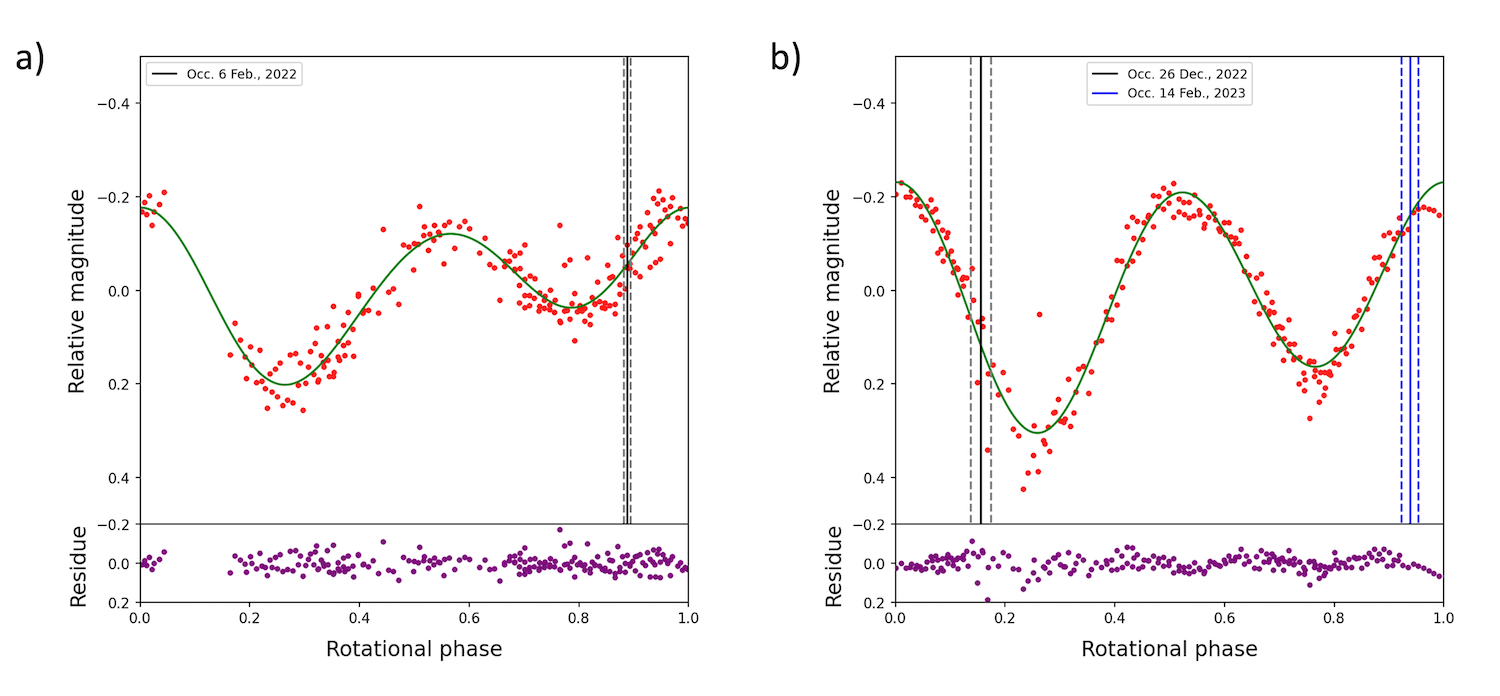
Fig. 1. Rotational light curves using (a) 2021 and (b) 2023 observational data. The vertical line indicates the rotational phase during the three occultations. Dashed lines show the uncertainty after propagating the 0.0002 h. At the bottom, the difference (residual) between the modeled curve and the observational data is shown.
The projected area on December 26, 2022, along with the absolute magnitude value during the occultation (7.72 ± 0.04), enabled us to determine a geometric albedo of 6.5 ± 0.5%, once again larger than previous thermal estimates. We also determined the absolute values of the triaxial ellipsoid axes.
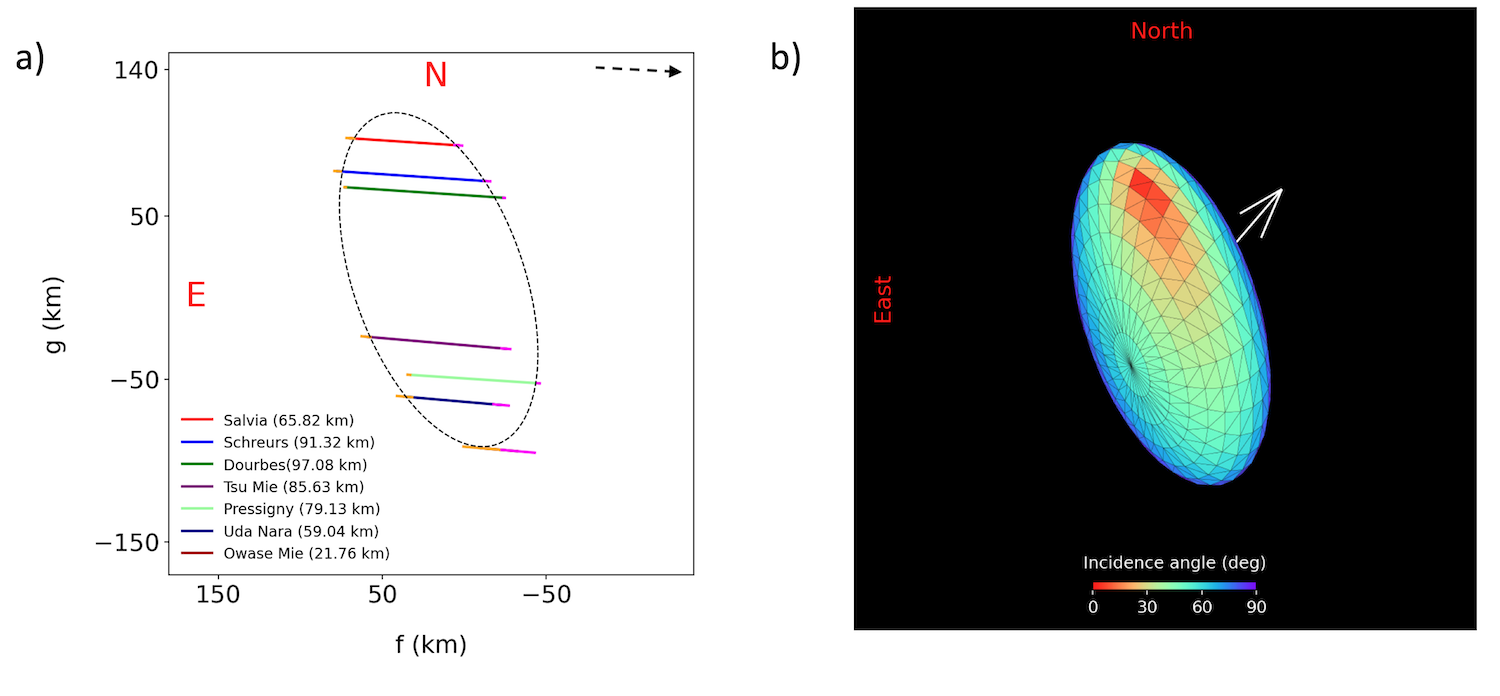
Fig. 2. a) Occultation on December 26, 2022. The dashed line describes the ellipse that best fits the points. The dashed arrow in the upper right corner indicates the direction of the shadow motion. b) Bienor simulation with our software seen from Earth during the occultation of December 26, 2022. The white arrow indicates the determined rotation pole solution.
In addition, we developed software to simulate synthetic light curves from a three-dimensional shape model and using photometric models (Fig. 2b). With this software, we validated the rotational pole solution of β = 50°, λ = 35°, which aligns with observations spanning 22 years. Finally, we discuss several possibilities that could account for the asymmetries observed in the rotational light curves, including irregular shapes, the possibility that Bienor is a contact binary, the presence of equatorial regions with much lower albedo, and eventually the possibility of a satellite. This last option is the most plausible as it could explain not only the asymmetries but also the missing area that would account for the discrepancies in albedo.
References
[1] Ortiz, J. L., et al. 2002, A&A, 388, 661. [2] Lacerda, P., et al. 2014, ApJ, 793, L2. [3] Bauer, J. M., et al. 2013, ApJ, 773, 22. [4] Duffard, R., et al. 2014, A&A, 564, A92. [5] Tegler, S. C., et al. 2016, AJ, 152, 210. [6] Müller, T., et al. 2020, in The Trans-Neptunian Solar System. [7] DeMeo, F. E., et al. 2009, A&A, 493, 283. [8] Fernández-Valenzuela, E., et al. 2017, MNRAS, 466, 4147. [9] Lellouch, E., et al. 2017, A&A, 608, A45. [10] Duffard, R., et al. 2014, A&A, 568, A79. [11] Fernández-Valenzuela, E., et al. 2023, A&A, 669, A112. [12] Desmars, J., et al. 2015, A&A, 584, A96.


